| Lee
and Karen Duquette, The Two RV Gypsies: Full-Time RVers at Fort Pulaski National Monument on marshy Cockspur Island US-80 E Savannah, GA 31410 October 19, 2014 |
|---|
Below quotes are from http://en.wikipedia.org/wiki/Fort_Pulaski_National_Monument and the fort's brochure for visitors. |
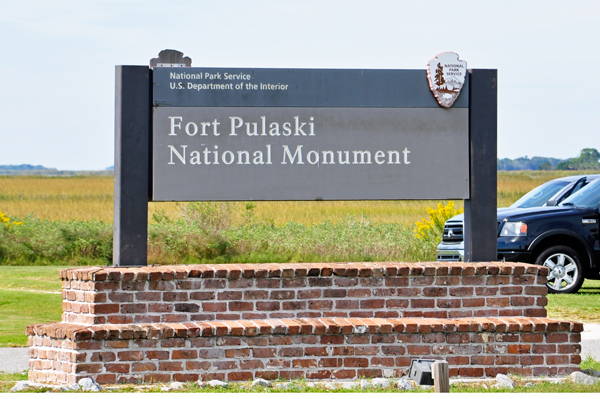 |
|
|---|---|
OVERVIEW: Fort Pulaski National Monument is located on Cockspur Island between Savannah and Tybee Island, Georgia. It preserves Fort Pulaski, where in 1862 during the American Civil War, the Union Army successfully tested a rifled cannon, the success of which rendered brick fortifications obsolete. The fort was also used as a prisoner-of-war camp. The National Monument includes most of Cockspur Island (containing the fort) and all of adjacent McQueens Island.
|
|
Sign about the demilune (French for "half-moon") a huge, triangular piece of land, bordered on all sides by a moat, and protects the gorge wall of the fort. |
|
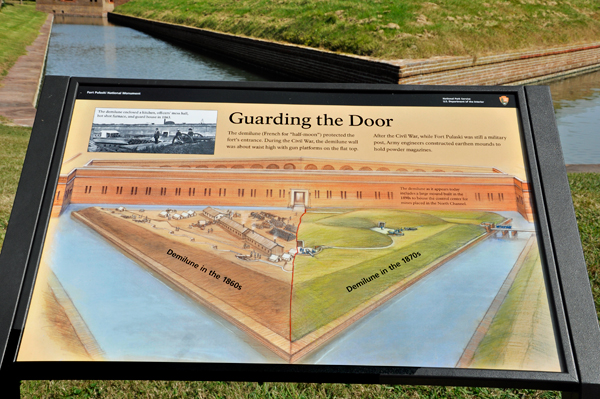 |
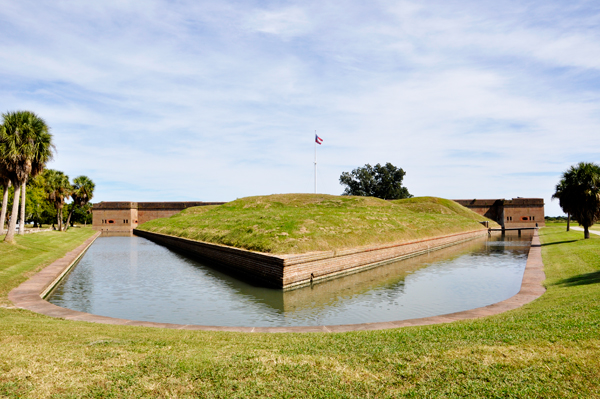 |
Surrounded on all sides by the moat, the demilune protected the vulnerable fort entrance. The triangular area was modified in 1872 by the addition of earthen mounds which housed powder magazines. During the Civil War, the demilune was flat and included gun platforms, kitchens, mess rooms, storage areas and a guardhouse. |
|
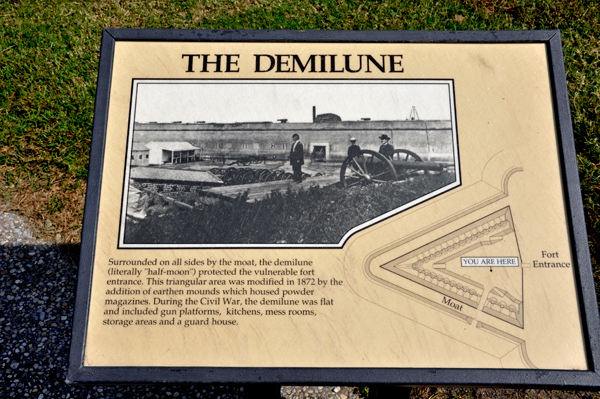 |
|
Below: Lee Duquette on the drawbridge to the Fort's inner yard. The drawbridge was raised by a strong wooden grille, called the portcullis, that dropped through the granite-lined overhead. Bolt-studded doors were closed behind that. |
|
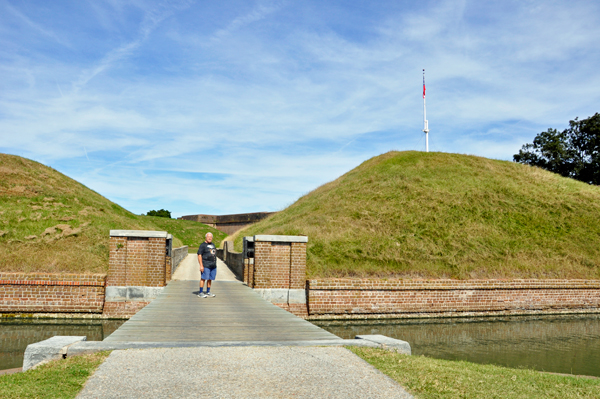 |
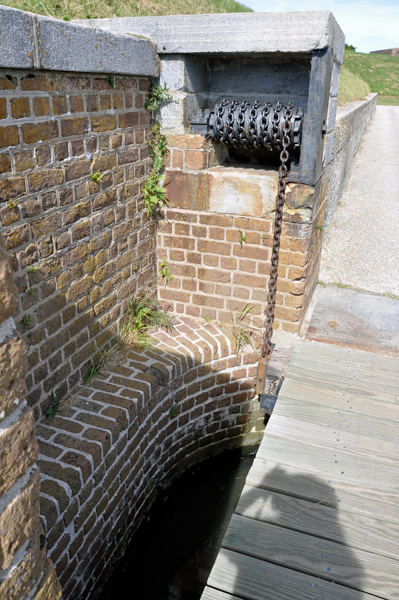 |
Below; Lee Duquette entering the first of several short tunnels in the outer yard of Fort Pulaski. |
|
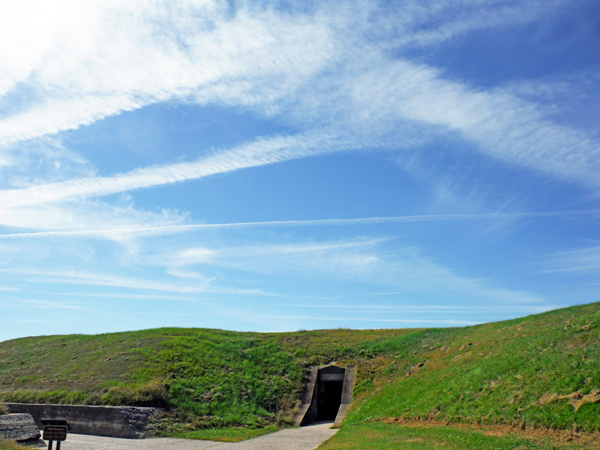 |
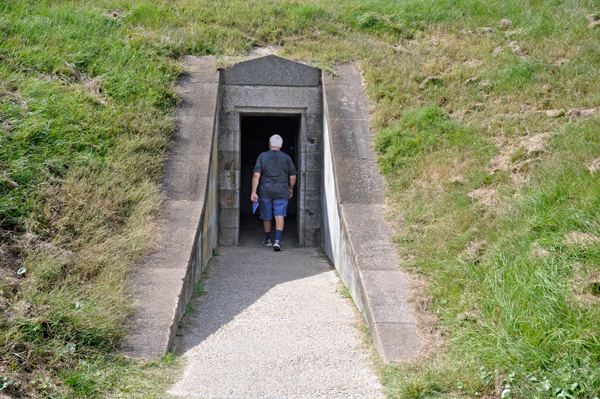 |
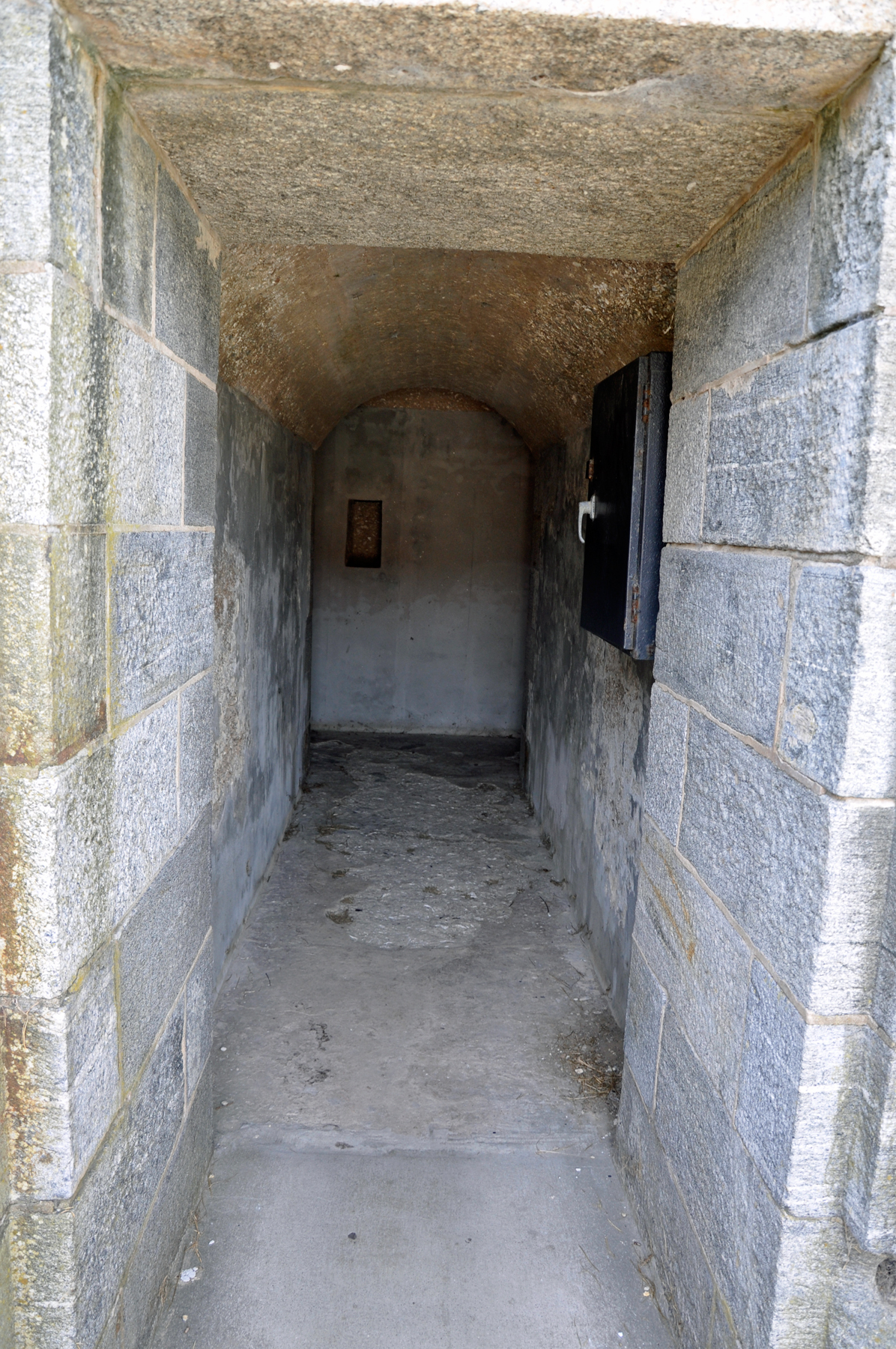 |
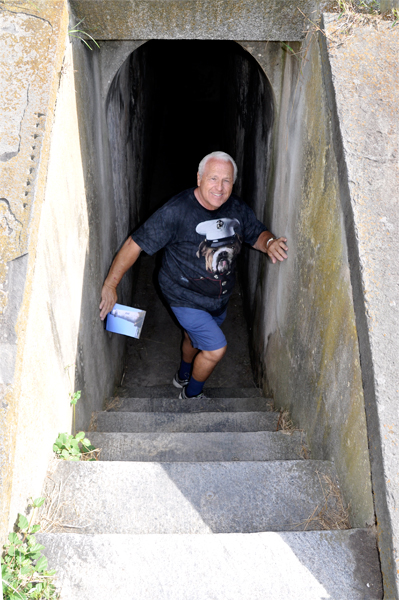 |
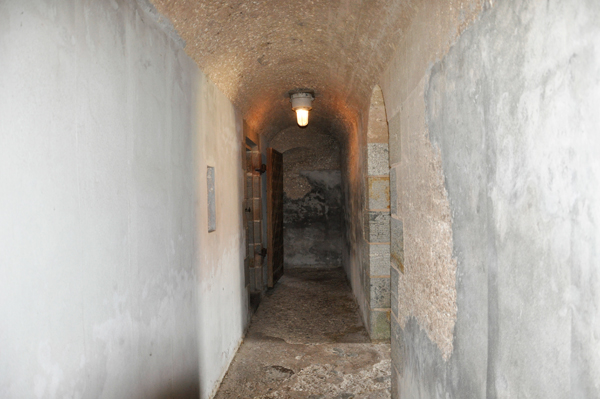 |
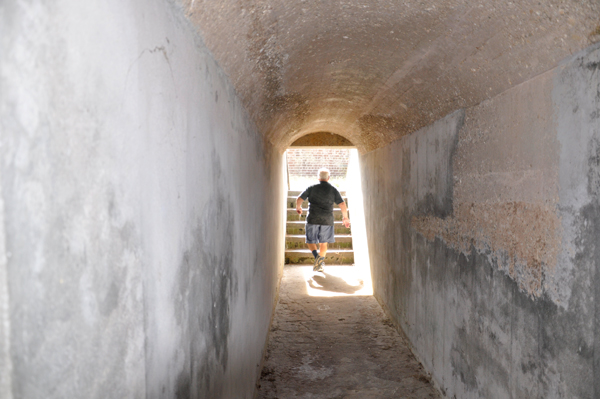 |
Below: The two RV Gypsies on the demilune as they photographed each other. |
|
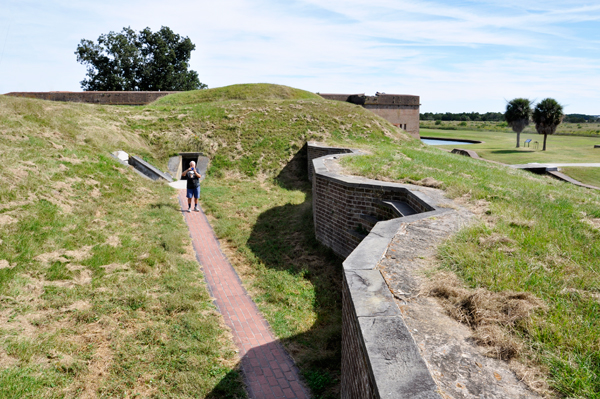 |
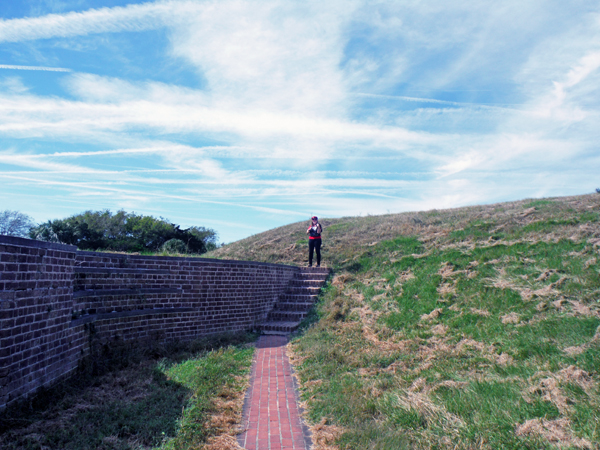 |
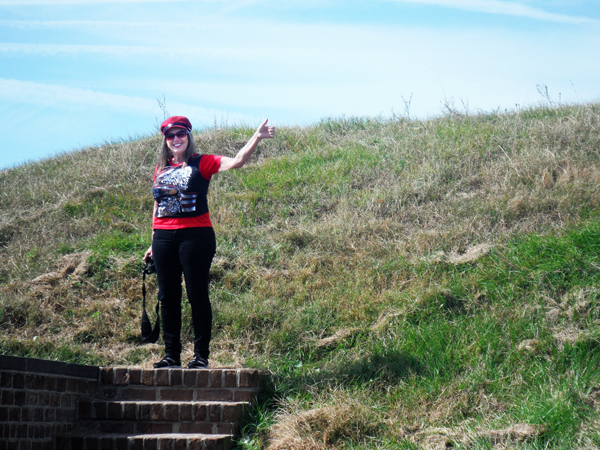 |
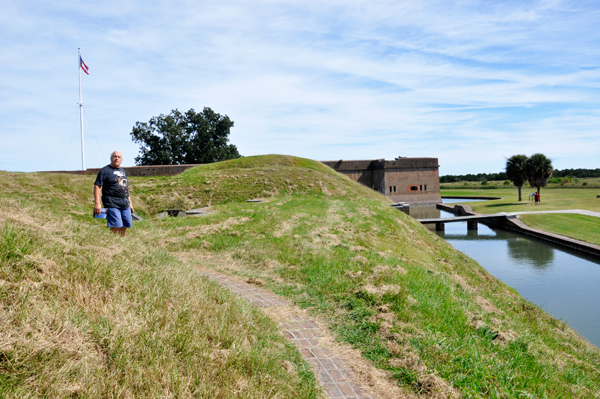 |
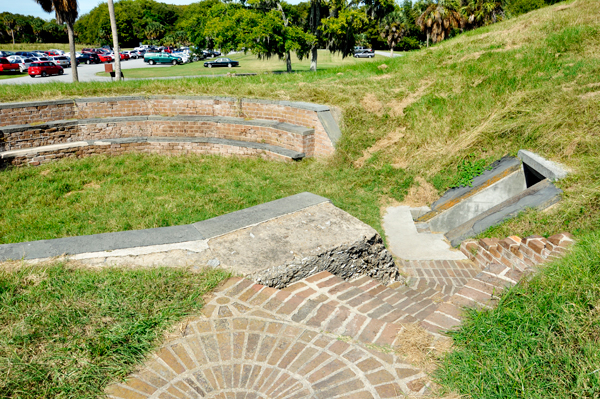 |
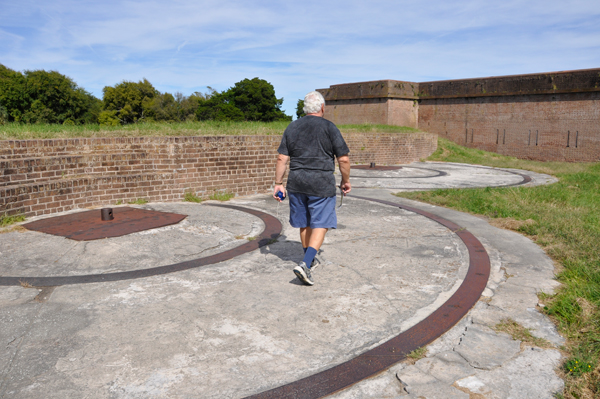 |
Below: Lee Duquette stopped at the entrance to two tunnels side-by-side and made a decision about which way to go. |
|
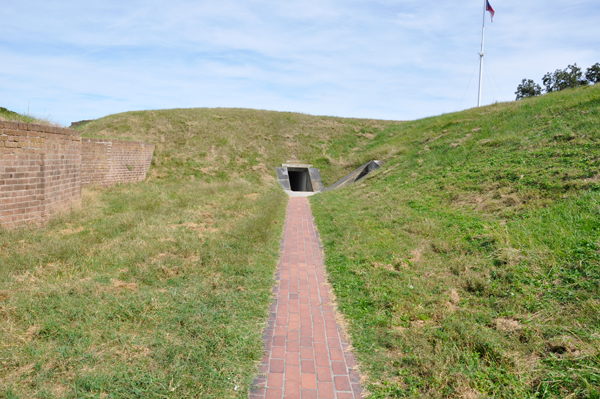 |
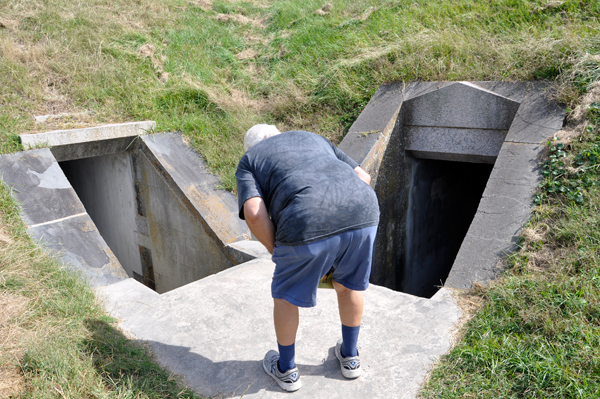 |
Below; Then the two RV Gypsies arrived at the Gorge Wall, which is the rear section of the fort and the fort entrance. Officers lived in most of the rooms here. Today, several are furnished to represent various aspects of life at the fort. |
|
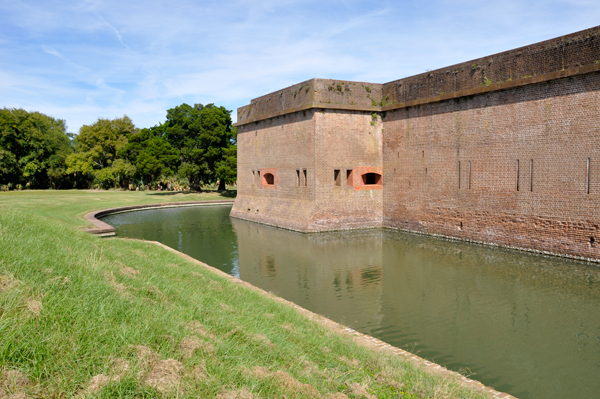 |
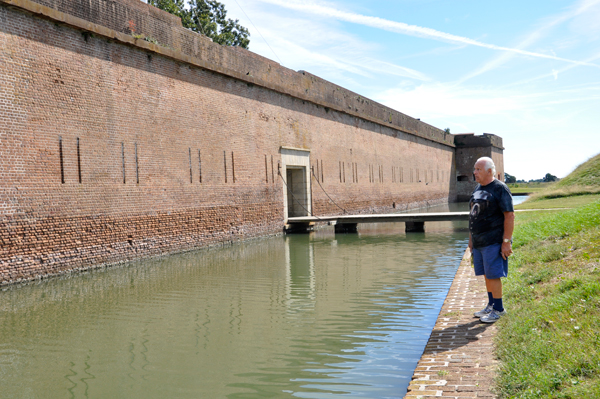 |
Below: Karen Duquette ready to enter the inside of the fort. |
|
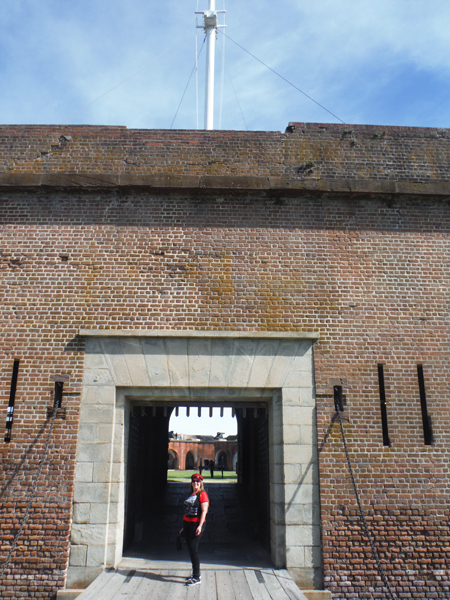 |
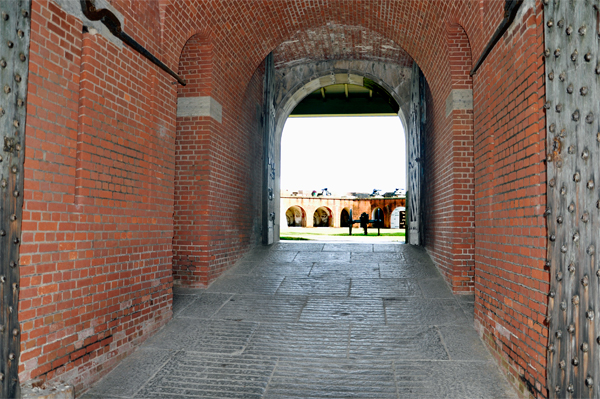 |
Below: Ten cisterns like the one below stores 200,000 gallons of water. Rain falling on the terreplein filters into the cisterns through pipes in the wall. After the capture of the fort in 1862, Union soldiers supplemented the natural supply with a steam condenser which converted the moat's salt water into fresh water. |
|
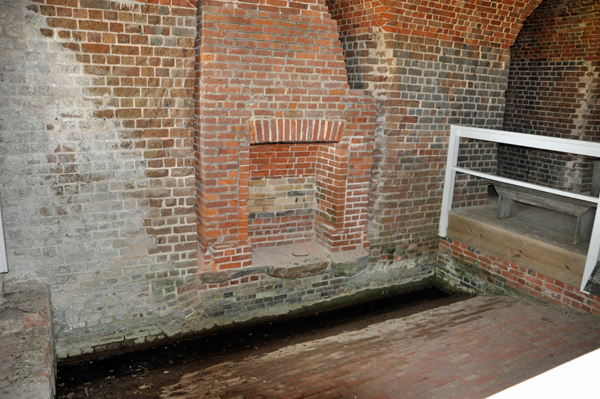 |
|
|
|
On the morning of April 10, 1862 Union forces asked for the surrender of the Fort to prevent needless loss of life. Colonel Charles H. Olmstead, commander of the Confederate garrison, rejected the offer.Fort Pulaski was prepared for a possible infantry attack. However, it never endured a direct land assault. Using 36 guns, including the new James Rifled Cannon and Parrott rifles, Union troops began the long sustained bombardment of Fort Pulaski. The rifled projectiles could be accurately fired farther (4 - 5 miles) than the larger and heavier smoothbore cannonballs. Within 30 hours, the new rifled cannon had breached one of the fort's corner walls. Shells now passed through the fort dangerously close to the main powder magazine. Reluctantly, Colonel Olmstead surrendered the fort. Only two soldiers, one Confederate and one Union, were injured in the attack. Olmsted's decision to surrender haunted him for decades. Gillmore succeeded almost entirely because of his rifled cannon, which caused massive damage in the walls of the fort. Gillmore's triumph won him promotion from engineer captain to brigadier general. |
|
Colonel Olmstead's Quarters where he surrendered in this room, April 11, 1862, after 30 hours of bombardment. (It looks like there are two ghosts in the photo below.) |
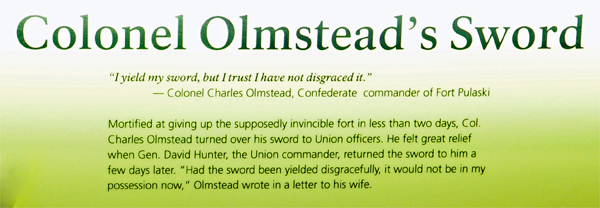 |
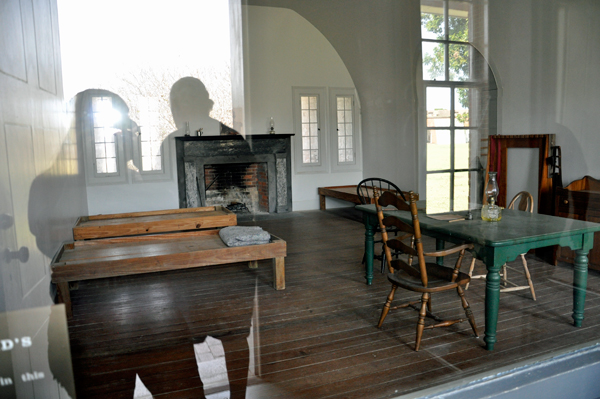 |
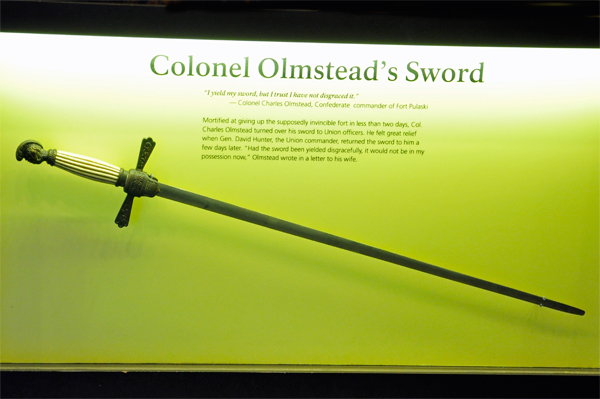 |
Below: Lee Duquette checked out the area by the stairs, then he climbed up the stairs and looked down through the window at Karen Duquette. |
|
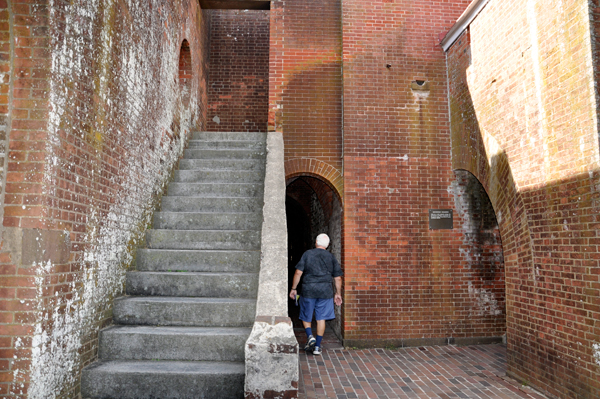 |
|
Below: Karen Duquette looked up at Lee Duquette, and they photographed each other, as they often do. |
|
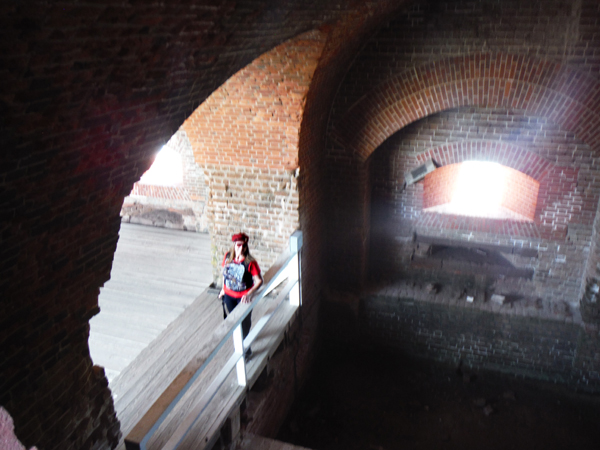 |
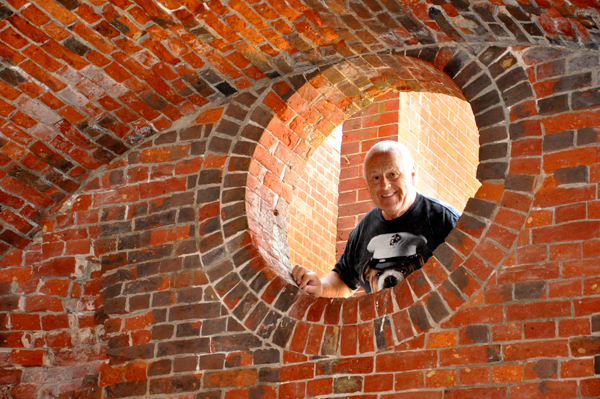 |
Below is the
view Karen Duquette saw while |
Below is the view Lee Duquette saw while
|
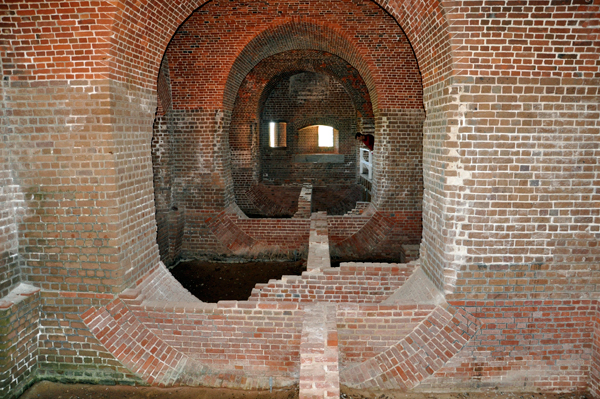 |
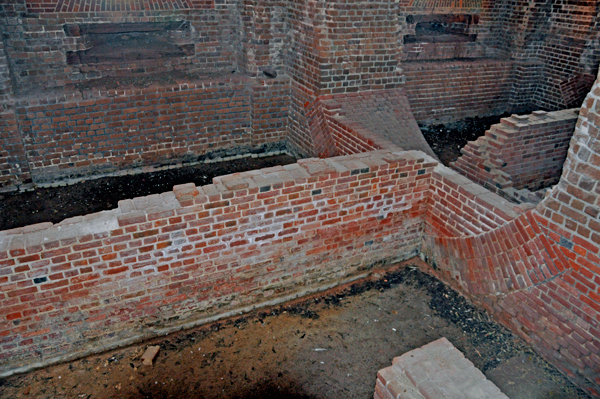 |
Below: One of several gun slits and a cannon aimed at the grounds. |
|
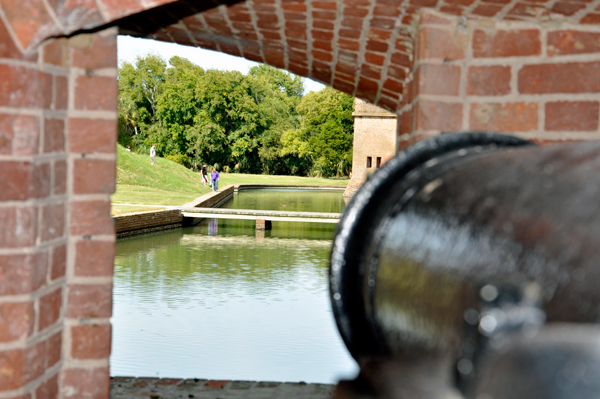 |
|
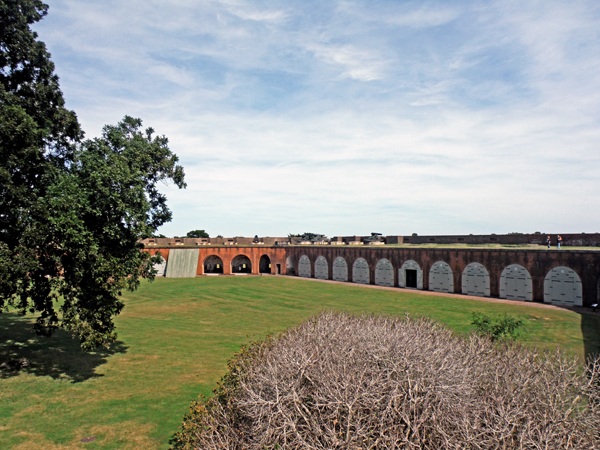 |
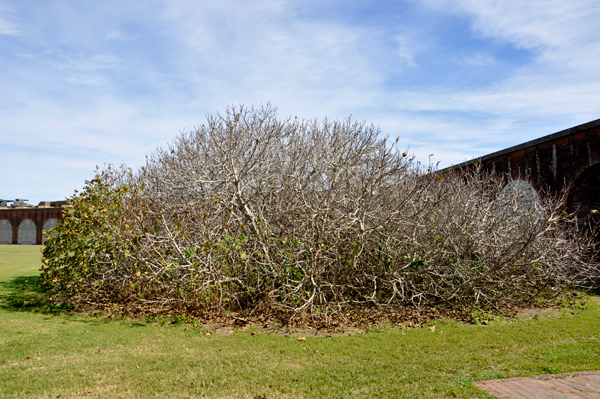 |
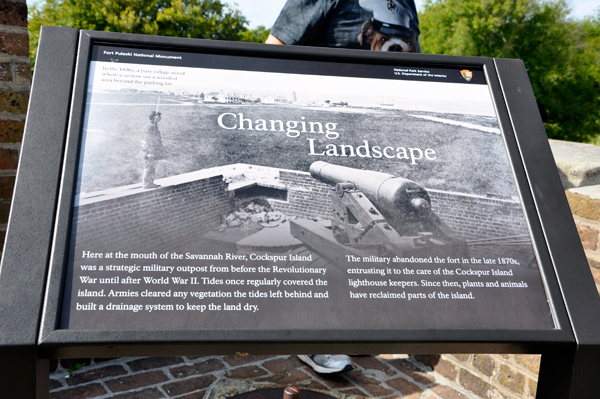 |
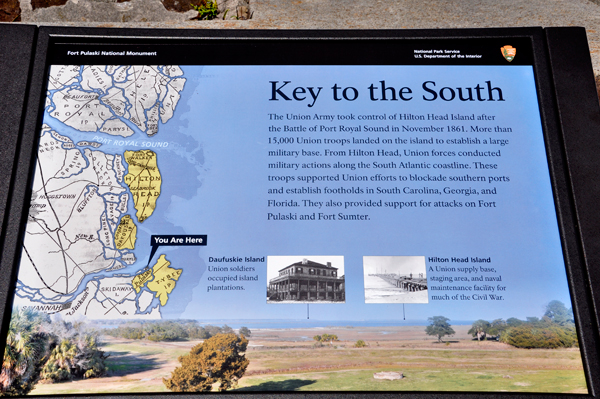 |
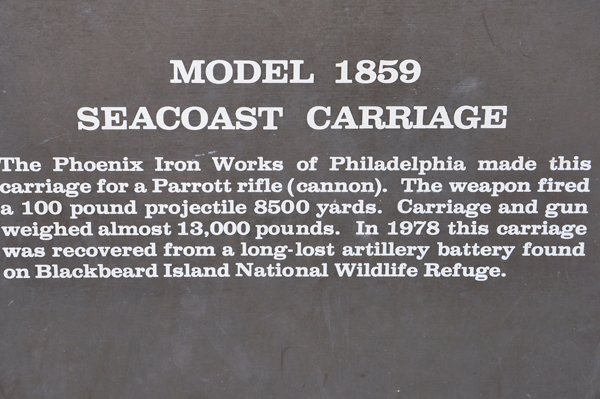 |
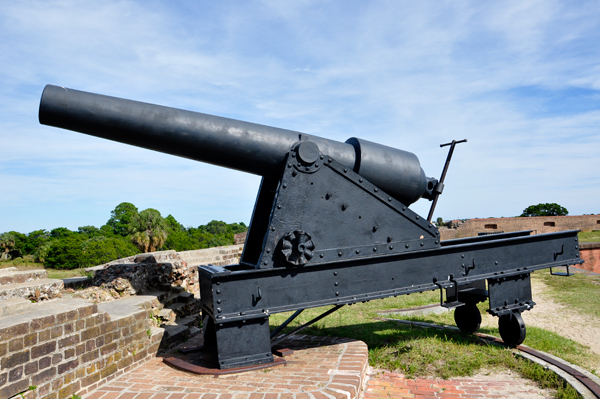 |
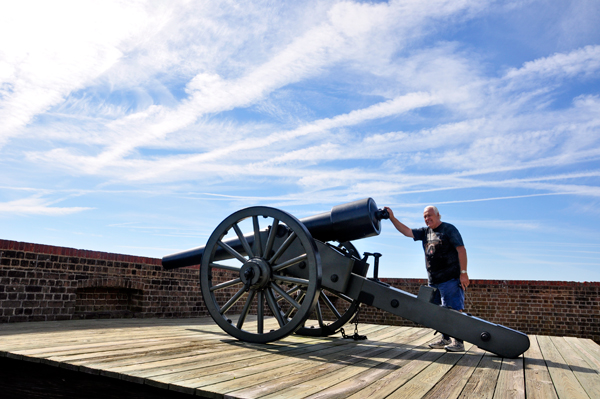 |
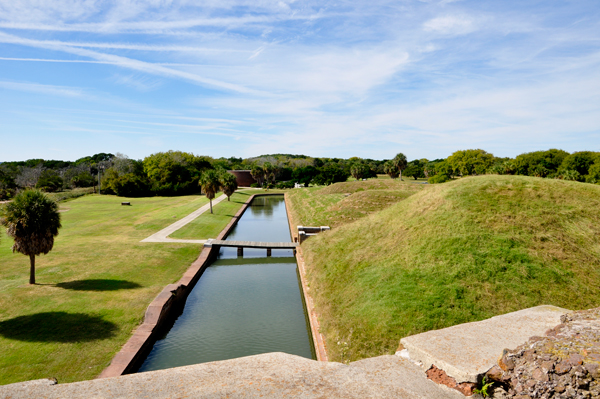 |
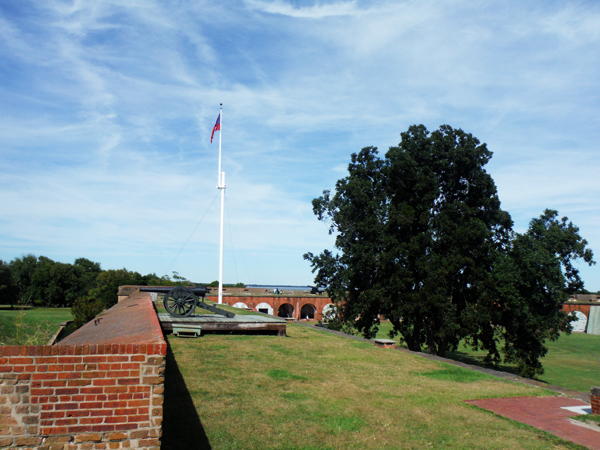 |
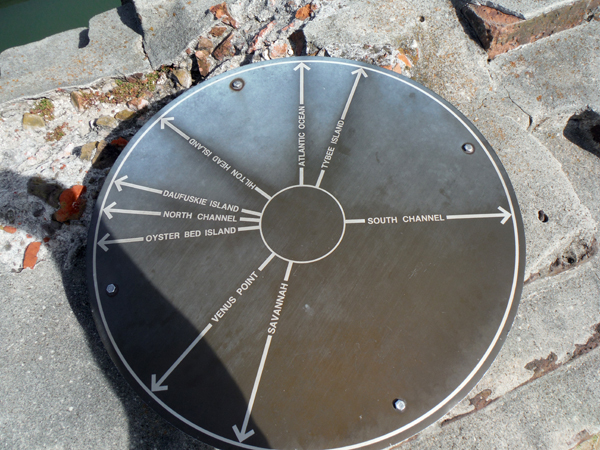 |
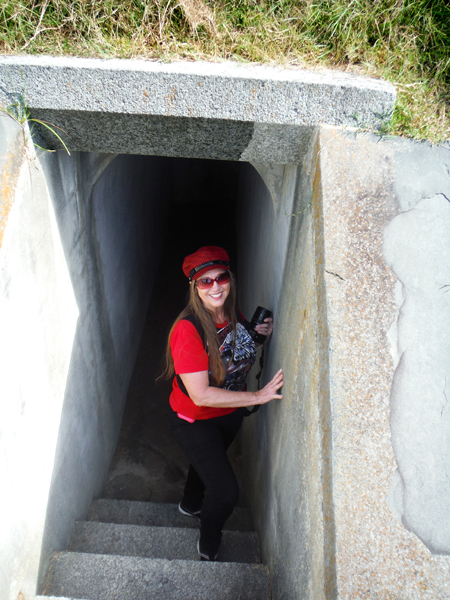 |
|
Below: Oh my goodness, Lee Duquette had stripes on his face and body and looked like he was in a jail cell. |
|
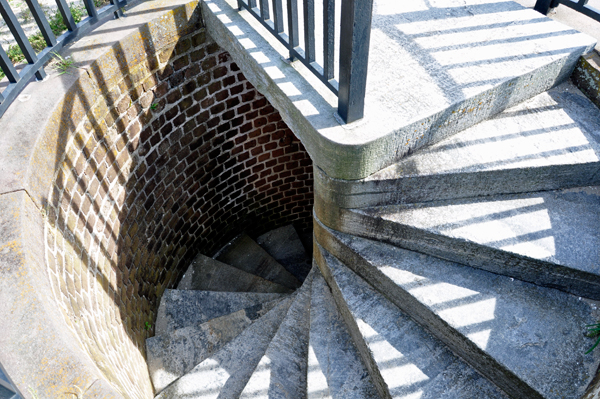 |
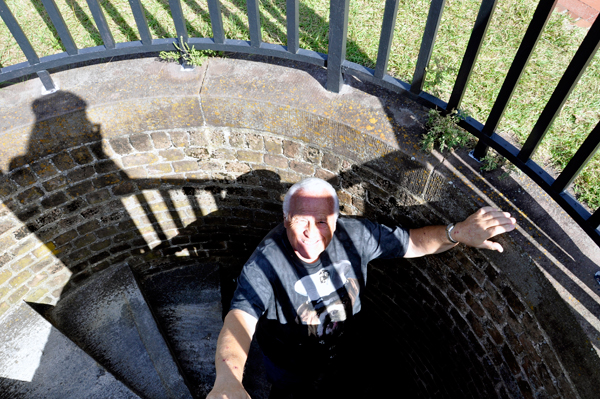 |
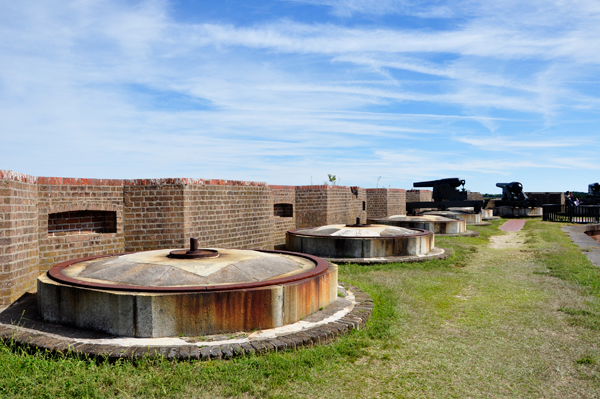 |
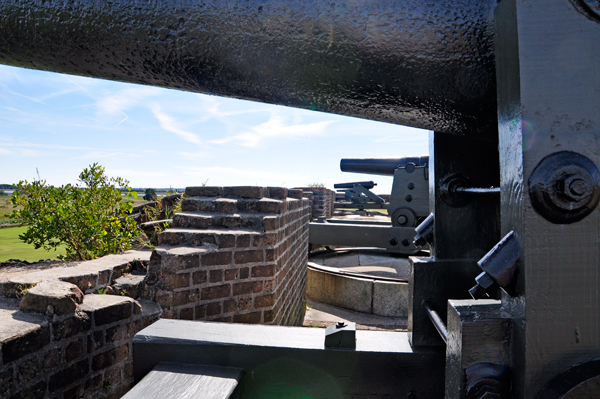 |
Below: Outside of the fort. |
|
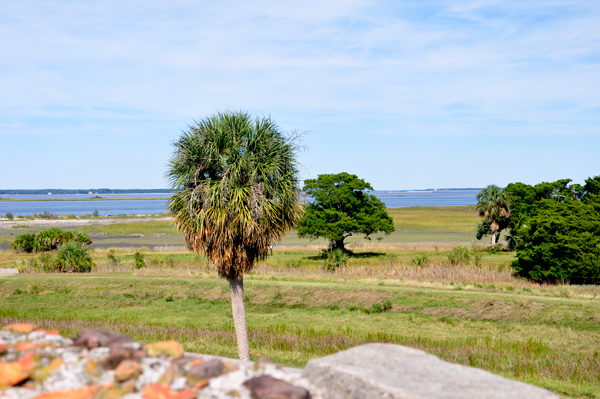 |
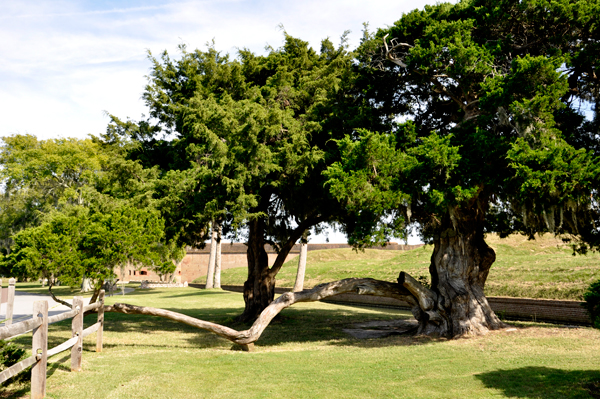 |
|
|
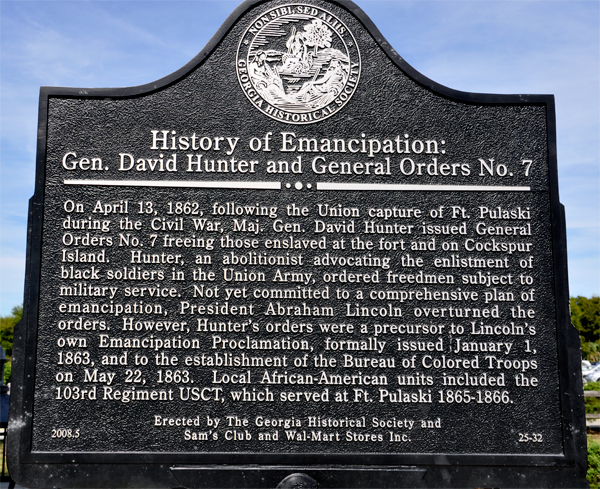 |
|
The garrison of Union soldiers reached 600 during the initial occupation, but as the War dragged on it became obvious the Southern forces would not be able to retake the fort. The garrison was later reduced to about 250. Late in the war, the fort was turned into a prison for a group of captured Confederate officers known as "The Immortal Six Hundred." Thirteen of these men would die at the fort. After the war ended, Fort Pulaski continued as a military and political prison for a short while. It would house a Confederate Secretary of State, Secretary of the Treasury, Secretary of War, Assistant Secretary of War as well as three state governors, a senator and the men who had commanded the fort after it had been taken by the South. |
|
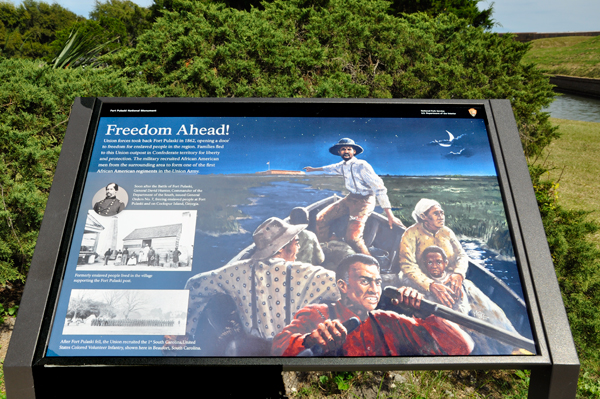 |
|
Post War1969-1972, the demilune to the rear of the Fort was covered with powder magazines and the few gun positions left were enlarged for heavier guns.By the turn of the 20th century, the fort began to fall into disrepair. In an effort to save the old fort, the War Department finally declared Fort Pulaski a National Monument on October 15, 1924 by presidential proclamation of Calvin Coolidge. The monument was transferred from the War Department to the National Park Service on August 10, 1933. At that time repairs were started, and members of the Civilian Conservation Corps arrived on Cockspur Island and began rehabilitation of the fort.Fort Pulaski was opened to the public only for a short time before the beginning of World War II. This war would see further use of Cockspur Island as a section base for the U.S. Navy. Following World War II, Fort Pulaski reverted to the Park Service's control, and it was administratively listed on the National Register of Historic Places on October 15, 1966. Fort Pulaski remains open to the public, with a museum opened in the 1980s.In November 2009, Fort Pulaski was used in the filming of Robert Redford's movie The Conspirator, based on the conspiracy involving the assassination of President Abraham Lincoln, most notably as the site for the gallows used to hang Mary Surratt and others.It was used once again in filming the 2012 horror film "Abraham Lincoln vs. Zombies". It was chosen for location shooting of scenes where Lincoln confronts zombies who had overrun a Confederate stronghold. |
|
Below: Karen Duquette was fascinated by the sky. The cloud formations and lines were quite unusual. |
|
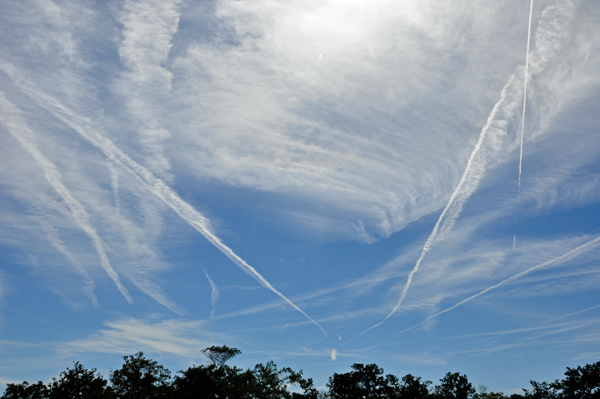 |
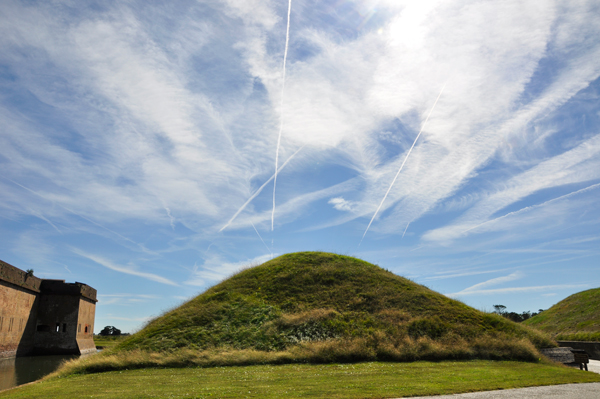 |
Below: The two RV Gypsies enjoyed a picnic lunch. |
|
 |
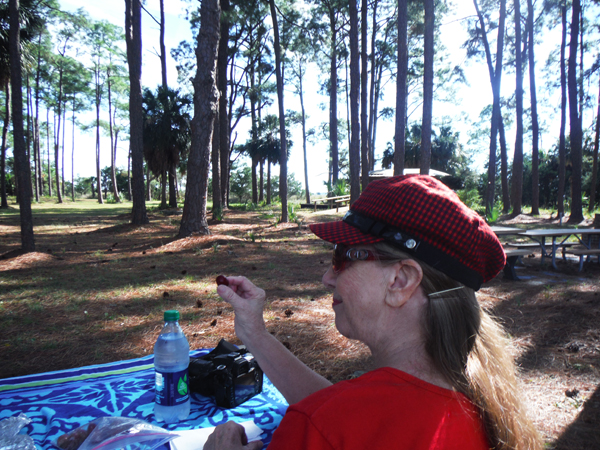 |
Below: After lunch, the two RV Gypsies got a different view of the fort as they hiked to the nearby Cockspur Island Lighthouse. (see the link below). An estimated 25 million bricks were used to construct Fort Pulaski. Many of the bricks, known as Savannah Gray, were handmade at the Hermitage Plantation on the Savannah River. Other bricks arrived from Virginia and Maryland. |
|
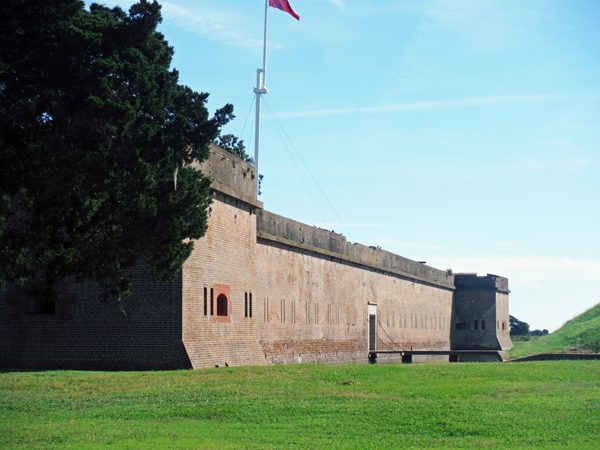 |
|
 Following the War of 1812, U.S. President James Madison ordered a new system of coastal fortifications to protect the U.S. against foreign invasion. Construction of a fort to protect the port of Savannah began in 1829 under the direction of Major General Babcock, and later Second Lieutenant Robert E. Lee, at the mouth of the Savannah River. In 1833, the facility was named Fort Pulaski in honor of Kazimierz Pulaski, a Polish soldier and military commander who fought under the command of George Washington. Pulaski was a noted cavalryman and played a large role in training Revolutionary troops. He took part in the sieges of Charleston and of Savannah.
Following the War of 1812, U.S. President James Madison ordered a new system of coastal fortifications to protect the U.S. against foreign invasion. Construction of a fort to protect the port of Savannah began in 1829 under the direction of Major General Babcock, and later Second Lieutenant Robert E. Lee, at the mouth of the Savannah River. In 1833, the facility was named Fort Pulaski in honor of Kazimierz Pulaski, a Polish soldier and military commander who fought under the command of George Washington. Pulaski was a noted cavalryman and played a large role in training Revolutionary troops. He took part in the sieges of Charleston and of Savannah. Though completed in 1847, Fort Pulaski was under the control of only two caretakers until 1860 when South Carolina seceded from the U.S. and set in motion the Civil War. It was at this time that Georgia's Governor Joseph E. Brown ordered Fort Pulaski to be taken by the state of Georgia. A steamship carrying 110 men from Savannah traveled down river and the fort was seized by the State of Georgia. Following the secession of Georgia in February 1861, the state joined the Confederate States of America. Confederate troops then moved into the fort.
Though completed in 1847, Fort Pulaski was under the control of only two caretakers until 1860 when South Carolina seceded from the U.S. and set in motion the Civil War. It was at this time that Georgia's Governor Joseph E. Brown ordered Fort Pulaski to be taken by the state of Georgia. A steamship carrying 110 men from Savannah traveled down river and the fort was seized by the State of Georgia. Following the secession of Georgia in February 1861, the state joined the Confederate States of America. Confederate troops then moved into the fort.

























